The revolution of laser cutting technology has greatly improved fabric processing by providing unmatched precision and flexibility. Highly accurate and detailed cuts can be achieved with this technology, from fashion and furniture to technical textiles. Laser cutting improves productivity and reduces waste due to its non-contact nature and efficient handling of complex designs. In this blog, we discuss the major benefits of laser fabric cutting while focusing on its technical capabilities, helping you decide on the best machine to enhance productivity in your textile production.
What is Laser Cutting and How Does it Work?
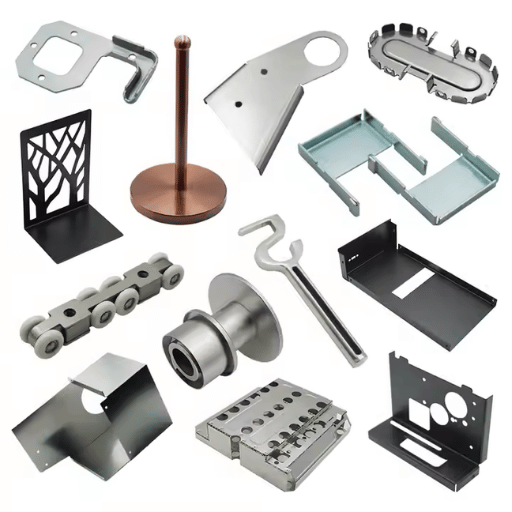
Laser cutting is a specialized technique that employs a high-powered laser beam to cut materials with exceptional accuracy. The laser is directed using optics and control systems to make precise cuts. The concentrated laser energy is capable of melting, burning, or even vaporizing the material. Meanwhile, assist gases such as oxygen or nitrogen aid in removing debris while cleansing the edges of the cut. This technology is controlled by computers which means that complex designs can be done with minimal waste. It is commonly used in textiles because it achieves precision at a remarkably fast rate, which makes it ideal for intricate designs and bulk production.
Understanding the Basics of Laser Technology
The systems are distinguished regarding their effectiveness based on several key parameters:
Modern laser cutting machines achieve precision levels up to ±0.001 inches. Such accuracy is crucial for some industries like aerospace and electronics due to their strict tolerance standards.
Cutting speeds vary depending on the type of material and the thickness of the laser. For instance:
A 500W laser can cut mild steel at a rate of 25 inches per minute (IPM) for 1/16-inch thick sheets.
Higher-powered lasers, such as 3000W systems, have no difficulty dealing with 0.5-inch thick aluminum at cutting speeds over 20 IPM.
CO2 and fiber lasers can cut a broad composite of materials that consist of metals such as steel, aluminum, and titanium, non-metals such as acrylic, wood, fabric, and other composites. Fiber lasers perform better on copper and brass due to their longer wavelength.
When it comes to operational cost, fiber lasers are up to 30% more energy efficient than traditional CO2 lasers. This means a 2kW fiber laser will only consume 10 kW of power compared to the 20 kW CO2 lasers with the same cutting capacity.
Advanced systems are laser are often equipped with automation options, material handling such as loading/unloading, real-time quality control, and cutting path programming, which allows for constant work while minimizing turn around time in high production scenarios.
These metrics explain why laser cutting has become a primary technology for industries where accuracy, speed, and versatility are crucial.
Understanding Laser Cutters
Focusing a high powered laser beam onto the surface of a material melts, vaporizes, or even burns it to allow for precise cutting. As such, laser cutters require three major components, a computer system that moves the beam, a laser resonator that generates the beam, and a focusing lens that intensifies the beam. For modern cutters, CO2 or Fiber lasers are used and the former is more efficient with energy use and processing speed. Newer models with enhanced control system adopt multi-axis cutting that allow more sophisticated shapes and tighter tolerances, smoother surfaces, or other precise fabrication needed in aerospace, automotive, and electronics. Other advancements like integrated sensors also provide real-time monitoring improving operational stability.
Parts That Comprise Laser Cutting Machines
Laser beams effective in cutting cannot be produced without a source such as CO2 lasers, solid state lasers, and fiber lasers. Each of these has distinct advantages such as fiber lasers that regenerate up to one micrometer making this type serve excellent in cutting reflective materials including aluminum and copper.
- Lenses, mirrors, and optical fibers working in unison constitute the beam delivery system. These components focus and direct the laser beam. A lens’ focal length is very important for the level of cutting accuracy needed.
- The position of the laser head and the worktable is controlled by a Computer Numerical Control (CNC) system. Advanced speed and accuracy algorithms are part of modern CNC controllers. With these onboard, the machine can cut depending on the thickness of the material up to 1,500 inches per minute.
- The cutting laser is focused on the cutting surface and assist gases like oxygen, nitrogen or compressed air are released. For example, oxygen is used with carbon steel because it accelerates the exothermic reaction. Nitrogen, on the other hand, helps achieve clean cuts without oxides on stainless steel.
- The required gases are supplied by the Assist gas system and this is done at high pressure of 10 to 20 bar depending on the usage. Productive edge quality and increases dependable on the type of gas used and the pressure applied.
- For precision control of motion, linear motors, ball or rack and pinion screws are used. Movement repeatability is often better than ±0.01 mm. Multi-axis systems allow cutting in three dimensions and the creation of complex curves and outlines.
- A cooling system is mandatory for regulating the temperature of the laser source and optics, thereby maintaining consistent performance. Industrial chillers usually maintains a temperature of within ±1 °C to avoid thermal distortion.
- In terms of operator safety, laser cutting machines have enclosed workspaces, interlocks, and shields that reduce exposure to high powered lasers (Class 4 lasers) to prevent harmful radiation exposure. Following the Z136.1 safety standards along with EN 60825-1 is a must.
- This combination of parts enables the construction of a single, highly effective and multifunctional laser cutting system that serves a broad range of industrial applications.
What are the Advantages of Laser Cutting for Fabrics?
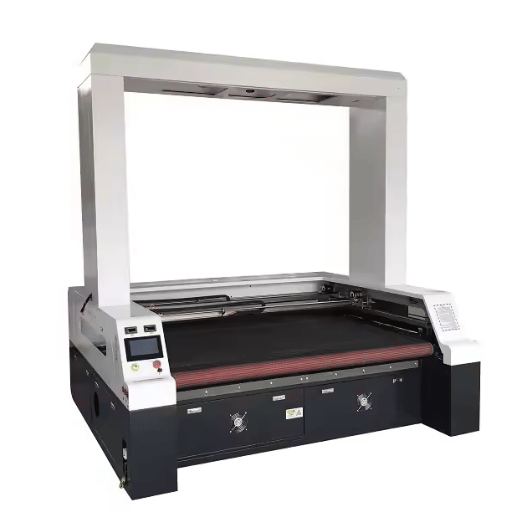
Correctness and Exactness in Fabric Cutting
When it comes to working with fabrics, laser cutting precision and accuracy is unmatched. Modern lasers have advanced motion control and optics as well as cutters capable of making intricate and repeatable cuts within very tight tolerances. Such measures are useful in lowering waste and fabric utilization. In addition, the process of laser cutting does not require any form of contact with the material, thus preventing any fraying or distortion of delicate textiles. These reasons help understand why laser cutting is best suited for fashion, upholstery and technical textiles which relies on precision and details.
Advantages of No Fraying Laser Cutting
Laser cutters achieve remarkable accuracy, with cutting tolerances of about ±0.1 mm achievable depending on the thickness and type of material. Such accuracy decreased production errors and waste by upwards of 20% compared to other cutting techniques. Furthermore, modern laser cutters are capable of cutting at speeds of 1,000 mm per second, improving processing time and productivity.
When considering the range of materials laser cutters can work on, a variety of textiles including lightweight silk and polyester to heavy-duty denim and Kevlar can be processed seamlessly. Research indicates that CO2 laser systems used in textile settings have been shown to cut synthetic materials with smooth, sealed edges, melting and sealing fiber ends cut with high precision, giving strength and preventing damage like fraying for durable textiles.
With spent time offset by programmable software, laser cutters enhance intricate custom design replicability for hundreds of pieces at once improving cosmetic appeal and scalability simultaneously. These cumulative effects of the machine’s precision mark its efficiency and cost effectiveness in mass production and bespoke textile manufacturing.
Speed and efficiency in textile processing
The performance and accuracy of laser cutting in textile processing is influenced by the following factors:
Typical ranges from 10 mm/s to 500 mm/s depending on the material type and thickness.
Optimized laser settings can achieve faster speeds on thinner fabrics.
Precision levels often reach ±0.1 mm or better, allowing for high-detail designs.
Works effectively on fabrics such as polyester, cotton, nylon, silk, and even composite textiles.
Ranges from 25W to over 150W based on the material and application, determining the depth and intensity of cuts.
Capable of processing hundreds of identical pieces within a production run, ensuring reproducibility.
Synthetic fabrics have clean, sealed edges which stop fraying and prevents the need for additional, post-processing.
Minimal waste is produced while using materials in an efficient manner which sustains manufacturing practices.
These factors together best illustrates the benefits of laser cutting technologies in textiles, enabling precision, volume, and environmental sustainability.
How to Choose the Best Laser Cutting Machine for Fabrics?
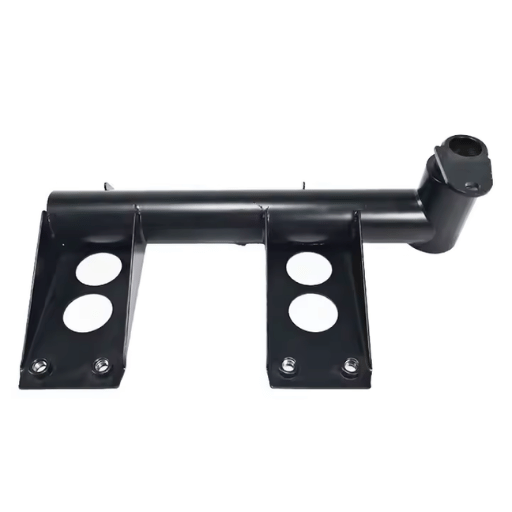
Parameters to Look at While Choosing a Machine
Evaluating the materials that the machine can process efficiently is one of the most vital details. Different machines are optimized for certain types of fabrics, such as natural fibers like cotton, wool, and silk, or synthetic ones like polyester and nylon. Machines with flexible power settings and advanced beam control are more flexible for varied tasks.
For bulk operations, productivity can be improved further with high-speed laser cutters. Along with that, check if the machine boasts ±0.1mm precision cutting and low tolerances for intricate cutting. Other indications of detail include technical specifications like the engraving resolution which is expressed in DPI (dots per inch).
Make sure to meet the project’s requirements by considering the physical dimensions of the workspace. As an example, smaller projects have intricate designs and require smaller machines with bed sizes of 300mm x 200mm while large scale works need a minimum cutting area of 1600mm x 1000mm.
The best machines ensure seamless integration with CAD or vector design software, enabling precise design execution. Smooth workflow processes are ensured when looking for compatible systems with .DXF, .AI, and .SVG file formats which are widely used.
Take into account the machine’s power consumption, usually in kW, to estimate the operational costs over time. Most new laser cutting machines come with energy-saving options like automatic standby mode, which decreases costs and helps the environment.
Factors such as the lifespan of components, their maintenance, and the availability of servicing parts remain crucial in the overall machine uptime. Machines with modular design tend to require lower repair costs due to improved spare parts availability and reduced production downtime.
By examining these parameters concerning the design of the machine, a manufacturer can install a laser cutting machine that is optimally configured for the operation fabric processes and ensure the highest level of operational dependability, efficiency, and growth potential.
Analyzing the CO₂ Laser’s and Diode Laser’s Differences
It is very equally important to consider the technical details, advantages, and disadvantages of CO₂ lasers and diode lasers. Here is an analytical overview of both technologies.
Required Wavelength: 10.6 micrometers (μm)
Material Feasibility: Non-metals like wood, non-magnetic metals like acrylic and thinly coated plastics can be cut.
Beam Grade: Fine cutting and engraving work can be performed possessing high beam grade with an edge clean cut, which is a precsise beam quality.
Efficiency Grade: Their conversion efficiency falls within the 10-20% range as is standard.
Maintenance Law: Periodical maintenance is mandatory in replacing Co2 filler glass holder tubes and framed strip laser tubes.
Cost Expectation: Replacement of parts adds to the increase caused by the moderate initial cost. Purchasing primitive sources adds to additional costs of both equilibrium and linear laser cooling systems.
Dissipative Water Resource Absorption: Water or air is to be diluted for heat flows from the machine.
Within industrial and artistic applications, non-metal artefacts can be astutely engraved in layers and cut along contours. These processes show high quality for non-technical crafts; therefore, the device is effective. These activities are the most precise to carve non-metal materials, while in art an control exerts optimal soft strengthen engraving.
Wavelength: 0.8-0.98 micrometers (μm)
Compatibility Range: Best suited for processing thin metals and plastics, as well as reflective surfaces, but CO₂ lasers outperform them in non-metal processing.
Beam Grade: Average beam quality is satisfactory for less precise work.
Operational Efficiency: High energy efficiency ranging from 30-50%.
Efficiency System: Reduced maintenance because of solid state design, leading to longer operational life.
Economic Factors: Lower operational costs, although more advanced diode systems can increase initial investment.
Cooling Technology: Compact air cooling is frequently used which shrinks system volume and complexity.
Uses: Marking, welding, and other industrial processes require energy efficiency and precision, making this application effortless.
Analyzing the attributes enables decision-makers to tailor the performance and efficiency of the production processes within the set budget by choosing the most appropriate laser systems.
Benefits of Fabric Laser Cutting Machines
Laser cutting machines for fabrics have revolutionized productivity and efficiency. For example, advanced units have a cutting speed of 1,200 mm/s.
With a highest acceleration of 3 G, systems make quick work of reaching different cutting points within the workspace.
These machines are capable of providing ± 0.1 mm cutting accuracy which is ideal for complex patterns and intricate designs.
Industrial grade fiber laser systems hold a M² value of 1.2 which means the beam is focused and not scattered, proving consistent and reliable energy output.
These machines cut synthetic materials such as polyster, nylon, silk and even natural fabrics liked cotton and composite textiles.
In terms of composition, the machine cuts up to 20 mm thick materials.
Camera Based Recognition Systems: Facilitate effortless edge and pattern matching for pre-printed fabrics eliminating redundant material, process, and resources waste.
Conveyor Systems: Integrated conveyors allow automatic, uninterrupted supplying which decreases manual procedures and enhances system efficiency.
Output Power Range: Power consumption and cutting requires a balance to be achieved for energy efficiency, within 100-300 W range cutting power is 100% effective.
Eco-Friendly Features: Heavily focuses on recovering energy in non-operating and idle machines for the ship to further reduce energy and power consumption while maintaining uncompromised cutting performance.
All model combinations are prepared according to documented customer requirements for elasticity concerning these technical specifications and features, By ensuring uncompromised precision, speed, and reliability, These unprecedented specifications offer laser cutting machines unparalleled solutions to modern manufacturing problems.
What Fabrics are Suitable for Laser Cutting?
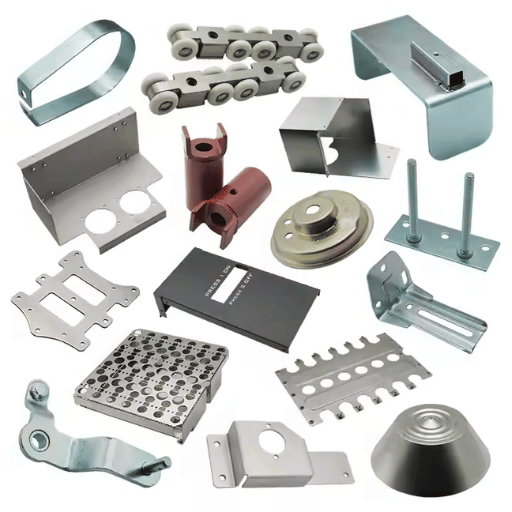
Examining Different Textiles: Natural Versus Synthetic
Laser cutting is a treatment method that can be used on both natural and synthetic fabrics. It is efficient in executing complex designs, and cutting them with accuracy. Some examples of natural fabrics are cotton, silk, and wool, which all respond positively, delivering smooth and cut edges due to the natural fibers’ response the the controllable heat from the laser systems. Synthetic materials such as polyester, nylon, and acrylic fabrics are also equally compatible because the lasers used in cutting these materials actually melt the edges to avert fraying. Certain blends of synthetic, however, can pose problems due to the noxious fumes they may emit, making ventilation and safety measures a must during these procedures. The ability to work with so many different materials makes laser cutting an important device in the fashion, upholstery and technical textile industries.
Issues with Cutting Nylon and Polyester
From a safety standpoint, critical factors must be checked when applying laser technology to cut nylon and polyester. Although they can be laser cut, these materials have some thermal sensitivities that could affect the yield. Take the case of nylon, for example; its cutting requires a power density in the range of 50-70 W/cm², whereas polyester cuts better at slightly lower values around 40-60 W/cm².
These polymers also vary in their melting points, where nylon’s melting point is around 220°C (428°F) and polyester’s is approximately 260°C (500°F). Great care must also be taken not to deform the material with excessive charring. The escape of volatile organic compounds (VOCs) during the procedure also necessitates proper fume filtration. Studies have indicated that without proper ventilation VOC concentration can exceed 200 ppm, creating environmental and occupational safety issues. Meeting these practical hurdles ensures the system is safe and efficient for use in industries.
Denim textile and technical textile processing is greatly sped up with laser cutting. It offers precision, accuracy, efficiency of intricate designs, speed, and consistency while not mechanically damaging the material. Moreover, the degree of control minimizes waste of materials and thus enhances the economical value of production. With proper ventilation systems for handling VOCs, it is possible to maintain green laser cutting for industrial applications. The final outcome proves it can with stand the industrial metric of reliability.
How to Maintain a Laser Cutting Machine?
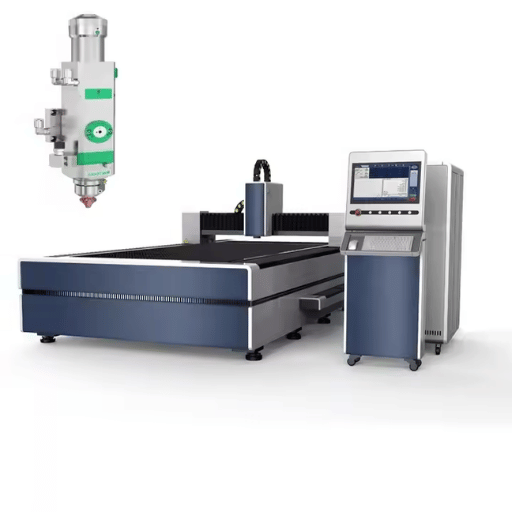
Guidelines for Regular Maintenance for Longevity
Optical Part Maintenance: Lenses and mirrors should be cleaned on a regular basis to prevent the buildup of dust or debris that would degrade the performance of the laser. Use the proper tools and appropriate cleaning solutions to avoid scratches and other forms of damage.
Check and Replace Filters: Air filters and exhaust system components should be checked for active air flow to girth and removal of exhaust fumes. Filters should be changed as required to recover optimum working condition as well as operational safety.
Lubricate Moving Components: The moving parts such as guide rails should be provided with suitable lubricants which will reduce wear as well smooth operation. Makes and the manufacturer’s recommended lubrication schedules.
Inspect Alignment: Routine inspection of laser beam alignment should be done periodically to ensure optimal cutting precision as lack of this may affect the machine cutting performance and degrade overall productivity.
Monitor Cooling System: The cooling system must be actively monitored to determine if the system is working properly to prevent overheating. Coolant level should be regularly topped off or replaced with a new one while inspecting the system for any leak.
Software Updates: The overall operational efficiency of the machine is enhanced with regular updates therefore, the software should be regularly updated to include new features as well as bug fixes.
The above routines of maintenance will assist in achieving optimal performance of the cutting machines while extending their lifespan. For best results, follow recommended procedures from the manufacturer.
Handling Fume and Dust Control
Maintaining safety in the workplace alongside the productivity of the machine relies on efficient fume and dust control in the process of laser cutting. When a laser cutting machine is in use, it emits vaporized material, fumes, and fine particulates. In the absence of effective extraction and control measures, these can, over time, build up and pose serious threats to health, particularly endangering the operators and damaging the equipment.
- Air Quality Standards: According to OSHA, metal fumes and similar particulates should have a permissible exposure limit (PEL) of less than 5 mg/m³ for an 8-hour work shift.
- Health Impacts: Unfiltered fumes can result in chronic respiratory problems, irritation or any number of occupational diseases, including metal fume fever, if left unchecked for an extended duration.
- Filtration Efficiency: HEPA filters in modern fume extraction systems are classifiable as high-efficiency particulate air filters as they can capture 99.97% of particles down to 0.3 microns in diameter.
- System Throughput: Fume Extractors designed for industrial use usually have airflow rates of 300 to 500 cubic feet per minute (CFM) and are built to aid in heavy-duty cutting tasks.
- Install Proper Ventilation: LEV systems should be placed in close proximity to the cutting area so that sufficient space cooling is achieved.
- Schedule Regular Maintenance: Continual meeting of minimum safety standards will require routine cleaning of extraction units and filter replacement.
- Monitor Air Quality: Particulate tracking air quality sensors are useful for monitoring safe thresholds and maintained concentration and are therefore recommended.
- Operator Training: Inspections should be performed regularly and extraction systems should always be used, and as such, operators need to be trained on these requirements.
- These steps eliminate those risks while simultaneously increasing the operational and cutting precision of lasers.
An efficient dust and fume control system reduces time disturbance dues to contaminant issues, protects the optical parts and components, and meets health and safety standards.
Why Care For Laser Tube and Laser Head
Cared laser head and tube enhance the system’s performance while reducing operational costs and downtime, increasing equipment longevity. The system should be maintained through regular inspections and cleaning to mitigate breaches in these standards and precision control efficacy.
Today’s CO2 laser tubes have a useful life expectancy of anywhere from 1,000 to 10,000 hours based on the manufacturer, the power level, and the maintenance provided. Inspections focusing on gas leakage, exterior cleanliness, and cooling efficiency mitigate accelerated aging.
Material waste and lowered precision cutting arise from poor alignment of the laser head, which can be mitigated through alignment routines. Research estimates approximately a 30% loss in cutting precision due to improperly set laser blast angle. Regular routines utilizing check fixtures are recommended to avoid performance loss on productivity-focused systems.
Power loss and overheating can be caused by particles covering the lens and mirrors, resulting in overworking the chamber. Even a modest 5% drop in laser output can reduce production efficiency substantially. Careful maintenance procedures with non degrading chemicals ensure the optical surfaces remain thermally stable and retain clarity.
Following these specific protocols in conjunction with ongoing evaluation of performance metrics enables operators to optimize the efficiency and economic value of laser systems.
What are the Environmental Impacts of Laser Textile Cutting?
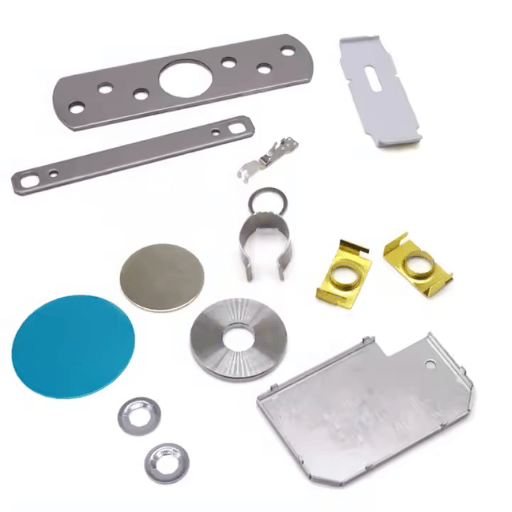
Comprehending the Use of Energy
The process of laser textile cutting requires a substantial amount of energy, largely due to the expenditures associated with powering the lasers and running the associated systems. Depending on the power, efficiency of the machine, and the materials being worked on, modern laser systems use anywhere between 10 to 30 kWh of electricity every hour. This consumption of energy adds to carbon emissions, especially in areas where fuel-based power sources dominate electricity generation.
The incorporation of fiber lasers into the more recent laser system designs is an example of innovations in lasering technologies aimed at reducing energy use. Shifting the focus of manufacturing plants to include renewable energy sources greatly helps in lessening the ecological impact associated with laser-based processes. Keeping track of and managing the processes still plays a central role in eliminating wasted energy.
Improving Waste in The Cutting Process
Most studies complete as laser cutting heightens material savings within the industry (industrial application) by over 30 percent (thirty percent), due to lower set cutting tolerances (cutting bounds) which enhance the rate of material usage (utilization).
Resultatly, switchage with new laser cutting systems within the aerospace industry (applying) is said to reduce scrap metal waste by 25 percent (twenty five percent) upholding cost savings alongside lower environmental damage. Alongside, eu operational nesting optimization algorithms encourage enhanced material usage by supplanting 98 scores out of 100 material usage efficiency in some of the systems. Numbers like this prove that advanced technology paired with optimized processes yield better outcomes when minimizing waste.
Responsibility in Fabric Sectors
One of the modern technologies in textile production is botanically waterless dyeing, which can save water usages by 90 percent (ninety percent) when compared to water usages in earlier methods. Alongside, noted modern techniques provide significant gallons savings in water consumption.
Application of these modern tools cut down energy consumption considerably as studies show upgraded energy efficient dyeing machines tackle energy usages by 40 (forty) percent. Cost savings alongside reduced emissions serve as significant amenities following the modifications being conducted.
Automated chemical management systems allow for accurate dosing and tracking, reducing wasteful spending on chemicals by almost 30-50% while still delivering product standards.
There has been significant growth in incorporating recycled fibers, particularly polyethylene terephthalate (PET) from used plastic bottles, into fabric manufacturing. This initiative lessens the overall environmental impact related to the extraction of virgin materials and helps to reduce plastic waste. Now, some manufacturers claim to incorporate as much as 50% recycled materials into their production lines.
New techniques for treating wastewater, particularly those incorporating advanced biological filtration and treatment, have increased the reusability of water. Now, many modern systems achieve water recovery rates of up to 85%, substantially reducing the volumes of water released as waste.
Use of renewable energy sources like solar or wind in the manufacturing processes of textiles has shown an increase in onshore carbon emissions. For instance, the adoption of renewable energy strategies resulted in some facilities experiencing a reduction in overall emissions by 30-40% of their greenhouse gas emissions.
Reference Sources
1. Textile Material Multi Ply Cutting by Laser
- Authors: Borislav Stoyanov et al.
- Journal: Tekstilna industrija
- Publication Date: 2024
- Citation Token: (Stoyanov et al., 2024)
- Summary:
- This study addresses the challenges of multi-ply fabric cutting using laser technology, particularly due to the low thermal conductivity of textile materials. The authors conducted experiments on ten layers of 100% cotton fabric to evaluate how cutting speed affects cutting quality.
- Key findings indicate that a 100 W laser beam can cut through all ten plies at lower speeds (30-45 mm/s). The study also noted that slower processing speeds resulted in wider colored edges, which disappeared after washing, suggesting implications for garment processing and finishing.
2. 2.5D Laser-Cutting-Based Customized Fabrication of Long-Term Wearable Textile sEMG Sensor: From Design to Intention Recognition
- Authors: Hwayeong Jeong et al.
- Journal: IEEE Robotics and Automation Letters
- Publication Date: October 1, 2022
- Citation Token: (Jeong et al., 2022, pp. 10367–10374)
- Summary:
- This paper introduces a 2.5D laser cutting method aimed at accelerating the fabrication of customized surface electromyography (sEMG) sensors for wearable applications. The study emphasizes the importance of high wearing comfort and stable contact for sensor signal quality.
- The methodology involved creating textile-based sensors with foam-filled electrodes to ensure solid skin contact during various activities. The performance of the sensors was evaluated in practical applications, achieving high classification accuracy for hand gestures using a Convolutional Neural Network (CNN).
3. A New Mathematical Model for Optimising Laser Cutting Parameters to Improve Fabric Quality
- Authors: Lisa Samura et al.
- Journal: Mathematical Models in Engineering
- Publication Date: July 31, 2024
- Citation Token: (Samura et al., 2024)
- Summary:
- This research presents a mathematical model designed to optimize laser cutting parameters to enhance fabric quality in the textile industry. The authors employed Response Surface Methodology (RSM) and Artificial Neural Networks (ANN) to predict fabric-cutting quality based on customized laser parameters.
- The study found that the ANN model with six nodes and 10,000 iterations yielded the best optimization results, demonstrating the effectiveness of these methodologies in improving fabric-cutting quality.
Frequently Asked Questions (FAQs)
Q: What benefits does a laser machine offer for processing fabric and textiles?
A: As stated previously, laser machines ensure high quality burns, cuts, and engravings on fabrics and textiles. Also, the edges of the fabric are smooth and do not fray which is important to laser cutting and engraving. It is impossible to obtain such results with ordinary cutting all the time, thus laser machines are a very important tool.
Q: In what way does the laser cutting of fabrics differ from other methods of cutting?
A: One of the main differences of traditional methods of cutting fabric is that laser cutting does not come into contact with the fabric itself. Because of this, there is no chance of distortion which minimizes the waste of fabric. It offers consistent results and is suitable for cutting a wide range of fabrics including synthetic textiles, delicate materials, and lace.
Q: Is it possible for a laser engraver to cut and engrave fabrics of various kinds?
A: Absolutely, a laser engraver has the ability to cut and engrave different types of fabrics. It provides flexibility in terms of design and its application. It is capable of doing both fleece cutting and engraving. It can perform these functions with the right settings.
Q: What types of laser machines are most suitable for cutting fabric?
A: When cutting fabric, CO2 laser machines are especially effective because they provide exact cuts without harming the fabric. They are excellent for laser cutting various textiles employed in domestic soft furnishings and other uses.
Q: In what ways does laser processing guarantee precision cutting of textiles?
A: Laser processing guarantees precision cutting by following the cutting lines with focused laser beams. Laser technology meets the demands of complex cut work textiles by ensuring clean cut edges and precision detailing required for sophisticated designs.
Q: Can a laser be used to cut fabric without fraying the edges?
A: Keeping fabric edges clean through laser cutting is possible because a laser cuts fabric and simultaneously seals the edges. This is better than traditional cutting methods which leave rough edges.
Q: What is the role of air assist in laser cutting and engraving fabric?
A: The air assist feature enhances the engraving precision by clearing obstructive debris and smoke from the cut area. While encouraging better work environment, the Air assist also optimize the performance of the laser cutter against fabric materials.
Q: How does the speed and power of a laser machine affect the cutting of textiles?
A: The speed and power of a laser machine are important parameters in achieving high-quality cuts. The possibility of achieving desirable results across different materials is enabled through manipulating these parameters.
Q: What are the benefits of using an xtool laser cutter for fabric processing?
A: The xtool laser cutter provides as sophisticated features as precise textile cutting and engraving, low and intuitive operation, as well as diverse material applicability. It is a functional response to micro and macro cutting requirements alike.
- How Much do Tube Lasers Cost Unveiling the Cut Laser Machines Cost
- Is a Laser Engraving Machine the Best Investment for Your Business?
- CNC Router vs CNC Mill: Key Differences Explained
- Understanding CO2 Laser Cutting vs. Fiber Laser Cutting Machines
- Discover the Power of UV Laser Marking Machines for Precision and Versatility
- Master the Art of Tree Trimming: Essential Pruning Tools and Techniques
- The Ultimate Guide to Types of Laser Welding: Choose the Right Laser Welding Machine for Your Project
- What is the Cost of a Laser Welding Machine Price Details of Small Laser Welders

